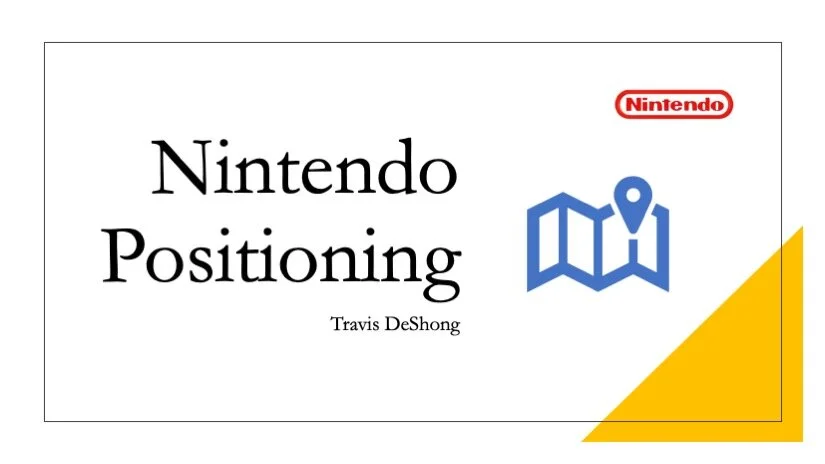This Coursera project focused on positioning the Nintendo brand against its competitors. Once I had established my value axes, I used the visual representation of the brand’s position to develop an understanding of my brand category’s points of parity, posit a potential point of difference for Nintendo, and craft a positioning statement from all these elements.
Perceptual Map
I plotted Nintendo alongside its competitors. As Nintendo is a consumer electronics company responsible for developing video game consoles as well as titles, I framed Nintendo as a video game publishing company, which would allow for a broader range of competitors to add to my data set. Nintendo (the right-most light red circle) is positioned alongside companies such as Xbox Game Studios, Activision Blizzard and Square Enix.
Points of Parity and Difference
On the left is my list of points of parity for video game publishers, along with some clarification on terms that I use. Beside this, I wrote a paragraph arguing what I believed were the unique aspects of Nintendo’s brand that set it apart, based on deeper research and an analysis of current events.
Positioning Summary
This summary elaborates on how I defined my value axes of variety and popularity in my perceptual map. The final line explains why Nintendo is plotted where it is on the map. In short, while Nintendo doesn’t produce the video game juggernauts that interest more serious, competitive gamers, its variety of titles on offer makes the barrier to entry for using their products lower.
Positioning Statement
Through the positioning statement, contained to a 4-5 sentence range, I conjured an interpretation of the brand’s voice given my projections of Nintendo’s target, frame of reference, point of difference, and reasons to believe.




